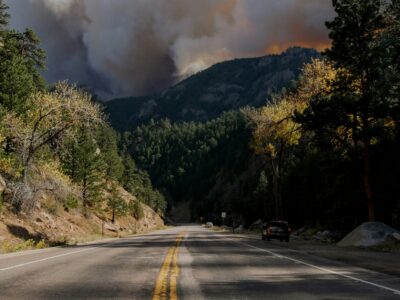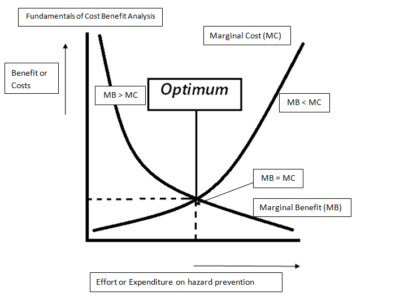Climate Change
California Wonders if it is Doing Wildfire Risk All Wrong
The California Wildfire Fund seeks input from stakeholders on a range of possible reforms.
Senate Bill 254 (Becker) deservedly received a lot of attention when the Governor signed it into law earlier this year. After many twists and turns and late night speculation of will they/won’t they, SB 254 became a landing pad for a sweeping set of wildfire and electric utility policy adjustments. Among the headlines: Creation of …
Continue reading “California Wonders if it is Doing Wildfire Risk All Wrong”
CONTINUE READINGLighting Candles in Dark Times: Environmental Law Centers in the Trump Era
These law school centers show it’s possible find ways to make a difference.
Environmental law have become vibrant parts of the law and policy ecosystem. At a time when despondency seems all too common, the work of these law school centers offers beacons of hope for the future of environmental protection. Some of that work is playing defense — pushing back against deregulatory efforts — while other work plays offense by identifying innovative directions for environmental policy. A comprehensive survey isn’t practical, but I’ll provide examples from several different centers.
CONTINUE READINGImmigration Law is Environmental Law
The recent ICE raid on a Hyundai-LG plant in Georgia highlights a problem in our visa system — and our politics.
Three weeks ago, federal and state agents conducted an immigration raid at a multi-billion-dollar Hyundai-LG battery plant under construction in Ellabell, Georgia and detained some 475 workers. About 300 of these workers were South Korean citizens. 14 were from China, Japan, and Indonesia. Another 145 were from Mexico and other Latin American countries. As has …
Continue reading “Immigration Law is Environmental Law”
CONTINUE READINGNew CARB Chair, New CARB Mandate
Lauren Sanchez has been named to the state’s most important climate job.
About 15 years ago, when presenting about California’s then-new climate change law AB32, I used to show a slide with six words on it — “Why Mary Nichols Rules the World”— along with a huge photo of Mary. The slide let me talk about the enormous authority and discretion bestowed by AB32 on one agency, …
Continue reading “New CARB Chair, New CARB Mandate”
CONTINUE READINGCalifornia Must Invest in Climate and Communities to Drive Climate Progress
The state has pioneered an approach—what’s worked, and what’s next?
As solar and other climate infrastructure construction accelerates, and with Californians concerned both about the cost of living and about seeing local opportunities result from climate projects, the conversation about community benefits (commitments to hiring and other local investments made by developers in connection with new projects) has grown increasingly animated in California and even …
Continue reading “California Must Invest in Climate and Communities to Drive Climate Progress”
CONTINUE READINGRight-wing populist environmentalism?
The future of environmentalism may include a right-wing, populist strain that is heavily NIMBY
While there is a lot of focus on left-wing NIMBYs in public discourse, there’s also a lot of right-wing NIMBY mobilization too. For instance, the conservative California city of Huntington Beach is leading the resistance to state efforts to require upzoning to facilitate housing. Conservative rural communities are often the locus of opposition to both …
Continue reading “Right-wing populist environmentalism?”
CONTINUE READINGThe Imperious Presidency
Executive Orders by Biden and Trump speak volumes about their perspectives.
It’s not a surprise that Trump has little respect for expertise and immense antagonism toward those he views as his enemies. What’s striking, however, is that way that these attitudes leak into even the most formal government documents, where they shape the official justifications for presidential actions. To borrow a phrase from Justice Scalia, sometimes a wolf comes in sheep’s clothing. But “this wolf comes as a wolf.”
CONTINUE READINGFrom Sacramento to Geneva: Two Arenas Tackle Plastic Pollution
California considers adding microplastics to its Candidate Chemical List as delegates negotiate a Global Binding Treaty on Plastics in Switzerland
Last Monday, the California Department of Toxic Substances Control (DTSC) closed its public comment period on a proposal to add microplastics to its Candidate Chemicals List. Adding microplastics to this list would allow the State’s Safer Consumer Product Program to evaluate potential Priority Products that may contain or release microplastics. The Program works to make …
Continue reading “From Sacramento to Geneva: Two Arenas Tackle Plastic Pollution”
CONTINUE READINGDoes the Law Require Cost-Benefit Analysis?
According to the D.C. Circuit, the answer is no.
Putting aside the particulars of the case, it seems wrong to apply the same standard (monetized cost-benefit analysis) to every provision in environmental law. These provisions have different language, reflecting differences in congressional priorities. Some provisions, for instance, may be designed push industry to find innovative solutions; others may reflect Congress’s value judgments or a desire to limit EPA’s discretion. We shouldn’t assume that the myriad differences in statutory language are irrelevant and that Congress wanted agencies to adopt the same method of making decisions in every case.
CONTINUE READINGThe Emperor’s New Endangerment Theory (Wrap-Up)
Trump’s EPA says carbon emissions from U.S. power plants are too insignificant to regulate.
U.S. power plants emit 1.5 billion tons of carbon dioxide a year, a little less than the entire country of Russia. The Trump Administration is proposing to end all regulation of carbon emissions by power plants, on the theory that these emissions should be considered insignificant. They have some complicated legal arguments , but the arguments break down the more closely you look at them.
CONTINUE READING











